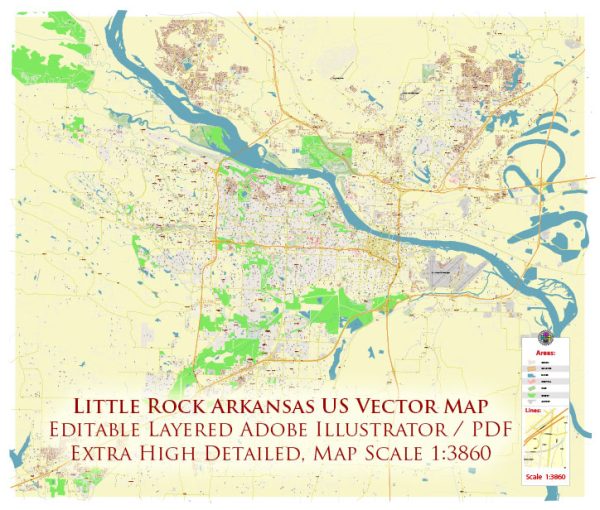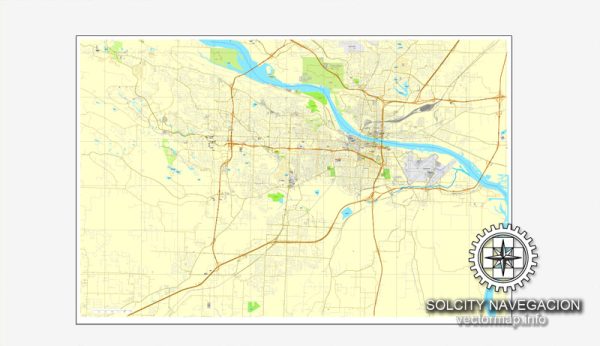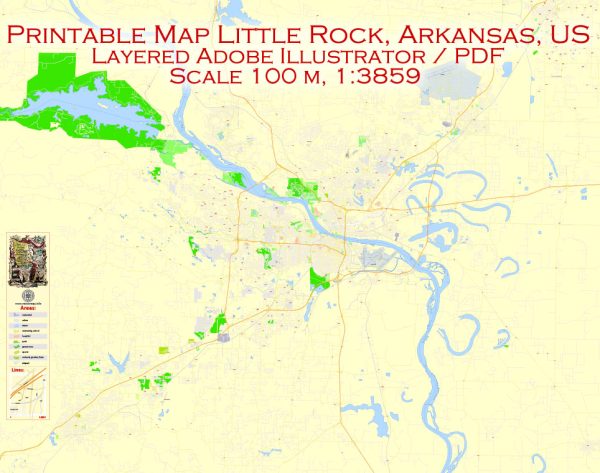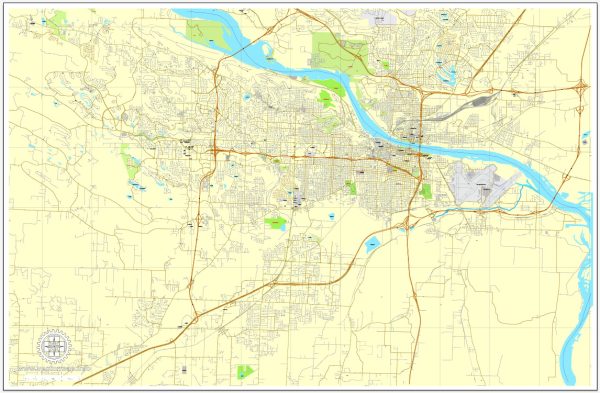Little Rock, the capital and largest city of Arkansas, has a rich history of urban development that spans several centuries. The city’s growth and transformation have been influenced by factors such as transportation, industry, politics, and social dynamics. Here is a brief overview of the key phases in the urban development of Little Rock:
- Early Settlement (1800s): Little Rock was founded in 1821 as a strategic point along the Arkansas River. The city’s growth was initially slow, but it gained prominence as a transportation hub due to its location along the river and later as a railroad center. The city became the capital of the Arkansas Territory in 1821 and the state capital in 1836.
- Antebellum Era (pre-Civil War): Little Rock grew as a center for trade and agriculture. The construction of the Old State House in 1836 and the Arkansas State Capitol in 1915 became symbols of the city’s political importance. The antebellum era also saw the growth of plantation agriculture in the surrounding areas.
- Civil War and Reconstruction (1860s): Little Rock was a focal point during the Civil War, and its capture by Union forces in 1863 had a profound impact on the city. During the Reconstruction era, efforts were made to rebuild and integrate Little Rock into the changing economic and political landscape.
- Post-Reconstruction to Early 20th Century: The late 19th and early 20th centuries witnessed industrialization and the expansion of railroads, which contributed to the city’s economic development. The construction of the Junction Bridge in 1884 enhanced connectivity between Little Rock and North Little Rock.
- Mid-20th Century and Civil Rights Movement: Little Rock gained national attention during the Civil Rights Movement in 1957 when nine African American students, known as the Little Rock Nine, faced intense opposition while integrating Central High School. This event had a lasting impact on the city’s image and spurred changes in race relations.
- Late 20th Century and Suburbanization: Like many American cities, Little Rock experienced suburbanization in the post-World War II era. The development of suburbs and the expansion of highways influenced the city’s growth patterns and demographics.
- Recent Urban Renewal and Revitalization: In recent decades, efforts have been made to revitalize downtown Little Rock. The River Market District, for example, has been transformed into a cultural and entertainment hub. The Clinton Presidential Center, opened in 2004, also brought national attention to the city.
- Economic Diversification: Little Rock has diversified its economy, moving beyond traditional sectors like agriculture and manufacturing. The city now has a strong presence in healthcare, finance, and technology, contributing to its economic resilience.
Throughout its history, Little Rock has faced challenges and undergone significant transformations, reflecting broader trends in American urban development. Today, the city continues to evolve, balancing its historical roots with a vision for a dynamic and inclusive future.





 Author: Kirill Shrayber, Ph.D.
Author: Kirill Shrayber, Ph.D.